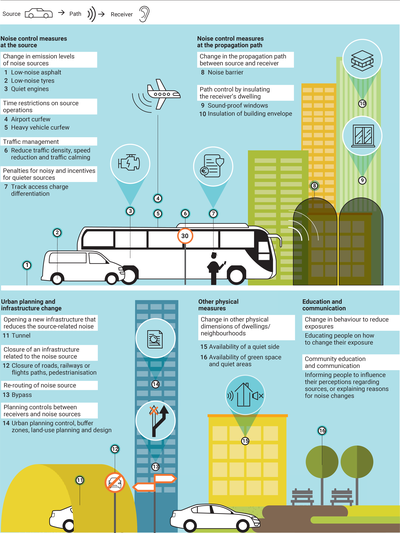All official European Union website addresses are in the europa.eu domain.
See all EU institutions and bodiesEEA report 05/2025
The Environmental noise in Europe — 2025 report presents the latest data and analysis on noise pollution and its effects on human health and the environment across Europe. The report draws on information submitted by European Union (EU) Member States and other EEA countries under the 2022 reporting round of the Environmental Noise Directive (END).
CORRIGENDUM: updated on 29 sept 2025
EN PDF: TH-01-25-013-EN-N - ISBN: 978-92-9480-718-2 - ISSN: 1977-8449 - doi:10.2800/1181642
Key messages
- According to the latest Environmental Noise Directive (END) reporting, over 20% of Europeans — more than one in five — are exposed to harmful transport noise levels. When measured against stricter World Health Organization (WHO) recommendations, this figure rises to over 30%, or nearly one in three citizens.
- Road traffic is the most widespread source of transport noise, exposing an estimated 92 million people to levels above the END threshold of 55 dB for the day-evening-night period, compared to 18 million affected by rail traffic and 2.6 million by aircraft noise.
- When compared to other environmental health threats, transport noise ranks among the top three — just behind air pollution and temperature-related factors. Chronic exposure to noise from transport contributes to 66,000 premature deaths annually in Europe, while also leading to around 50,000 new cardiovascular disease cases and 22,000 cases of type 2 diabetes.
- Almost 16.9 million Europeans experience long-term annoyance due to noise from transport and approximately 4.6 million suffer from severe sleep disturbances. According to new research, noise could also contribute to thousands of cases of depression and dementia.
- It is estimated that over half a million children in Europe experience reading difficulties and about 63,000 experience behavioral issues due to transport noise. High noise levels are also linked to approximately 272,000 cases of overweight children.
- Noise pollution from transport sources results in the loss of 1.3 million healthy life years annually in Europe, equivalent to an annual economic cost of at least EUR 95.6 billion, representing around 0.6% of the region’s gross domestic product (GDP) each year.
- Based on current projections, it is unlikely that the EU will meet the target set out in 2021 EU action plan ’Towards zero pollution for air, water and soil’ to reduce the number of people chronically disturbed by transport noise by 30% by 2030 (compared to 2017 levels) without additional measures, including regulatory or legislative changes. The number of people highly annoyed by transport noise in the EU declined only by an estimated 3% between 2017 and 2022, falling short of the pace needed to meet the zero-pollution noise reduction objective.
Ask an expert:
Noise — we all know that persistent levels of it can be annoying. But how harmful is it to our health and the environment? The EEA has published a comprehensive assessment of the impact noise pollution from transport is having on our health and on our environment. We asked Eulalia Peris, environmental noise expert at the EEA, to give a summary of the report as well as key facts about noise pollution.






